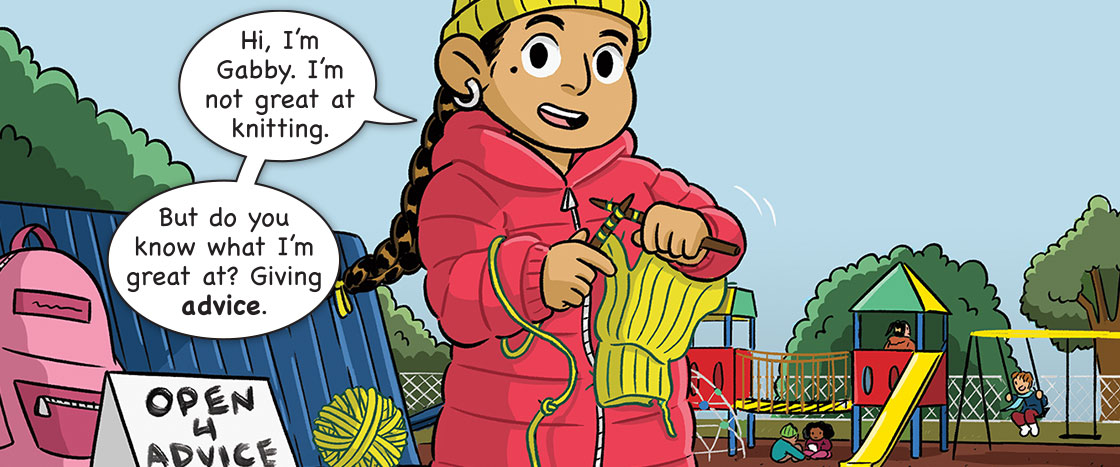
Shannon Wright
Gabby Solves The "Just Kidding" Problem
Enjoy a mini graphic novel about friendships and conflict resolution.
By Laine Falk
From the December 2021 / January 2022 Issue
Lexiles: GN470L
Guided Reading Level: L
DRA Level: 20-24
Vocabulary: advice, solve
Standards
About the Story
ELA Focus
Features of graphic novels
CASEL Social and Emotional Learning Focus
Relationship skills: Resolving conflicts constructively, communicating effectively
Step-by-Step Lesson Plan
1. BEFORE READING
“What’s in a Comic?”
- This video teaches kids about the features of a comic.
- Before watching, tell kids to look out for four features they might find in a comic.
- After watching, ask for kids’ help to fill out a list of comic features on chart paper. The features mentioned in the video are: panels, speech bubbles, thought bubbles, and onomatopoeia.
- Tell kids to look for those features in the mini graphic novel. They can fill in our “Comic Features Hunt” skills sheet after reading.
Set a Purpose for Reading (5 minutes)
- Open your magazines to “Gabby Solves: The ‘Just Kidding’ Problem.” Ask kids: What kind of story is this? (a comic, or a mini graphic novel)
- Next, read the Think and Read prompt on page 13: “As you read, think about what Mia says that the other kids don’t like. What could she have said instead?” Encourage children to think about this prompt as they read.
2. READ THE STORY (10-15 MINUTES)
- Kids can read this story individually, in small groups, or as a class.
- As they read, ask kids to note who is being a good friend and when.
3. AFTER READING
Extend the Story With an Activity (20 minutes)
- Kids can “finish” the story with the “What Happens Next?” printable. They’ll fill in the voice bubbles for the characters and create their own comic panel.
- This activity helps develop the skill of making inferences.
Assessment: Quiz (10 minutes)
- Pass out the quiz to assess comprehension of the article.
- We also offer a lower-level quiz.
- Both quizzes are now available in multiple-choice and written-answer formats.
ELA/SEL Focus: Dear Gabby
- Kids can write Gabby a letter about a question they would like her advice about. Then they can pretend to be Gabby and write the solution!
ELA Focus: Comic Features Hunt (10 minutes)
- Pass out the Comic Feature Hunt printable.
- Kids can use the mini graphic novel to fill it out and learn about the different features of comics/graphic novels.
NEW! Special Lesson for Independent Learning While Remote (30-40 minutes)
- We created a brand-new resource to make it easy for your students to do an independent remote lesson with the Mini Graphic Novel.
- Look in your Resources section for the “Slide Lesson.” It’s a self-contained group of slides that walk your students through the Mini Graphic Novel.
- This easy-to-use group of Google Slides walks your students through reading the story independently, answering three questions after reading, and then doing our “What Happens Next?” inference page.
- It’s a simple way to take the resources we have already created and put them in one place so you don’t have to create anything new!
Text-to-Speech
